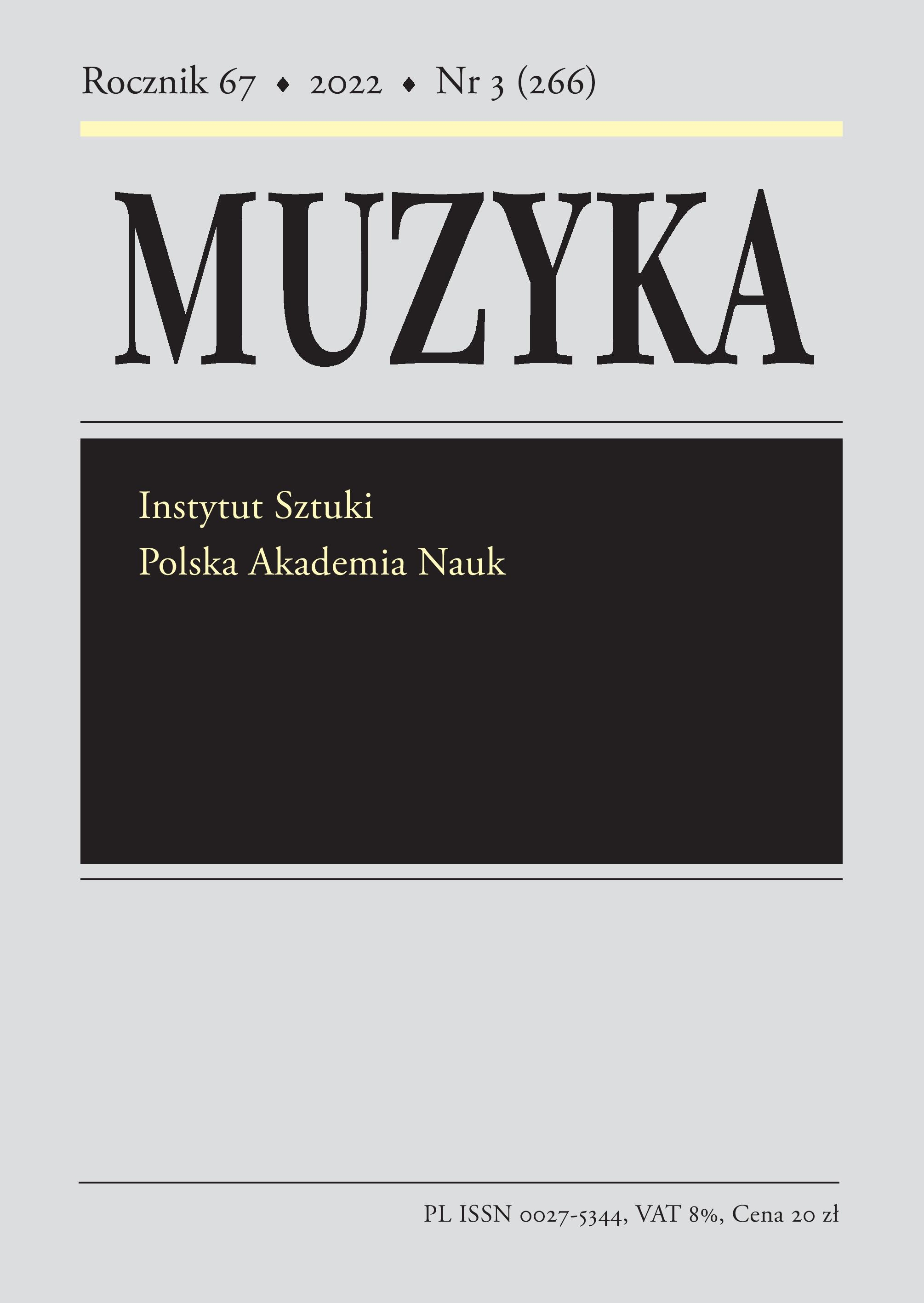Hymn „Omni die dic Mariae” w kontekście zabiegów z początków XVII wieku o kanonizację Kazimierza Jagiellończyka
The Hymn 'Omni die dic Mariae' in the Context of Early Seventeenth-Century Efforts to Canonise Prince Casimir Jagiellon
Author(s): Barbara Przybyszewska-Jarmińska, Leszek JarmińskiSubject(s): Music, Sociology of Religion
Published by: Instytut Sztuki Polskiej Akademii Nauk
Keywords: St Casimir; canonisation; sacred music; Staniątki Cantionals; Hieronim Powodowski; Stanisław Grochowski; Krzysztof Klabon; Diomedes Cato; Sigismund III Vasa; Polish music
Summary/Abstract: In an account of his 1597 stay in Kraków, Giovanni Paolo Mucante reports that Hieronim Powodowski had discovered, sometime earlier, a piece of parchment containing record of a text then unknown in the Polish-Lithuanian Commonwealth, ‘Omni die dic Mariae', and addressed the royal Kapellmeister (Krzysztof Klabon) with a request to set it to music. He then had the work printed. The four-part musical setting, complete with a Polish translation by Stanisław Grochowski and Przecław Mojecki, was published without naming the music composer, in 1598 in Cracow. The ‘Staniątki Cantionals’ include anonymous records of this piece, probably made before it was printed. In 1601, King Sigismund III Vasa and the Vilnius Catholic church hierarchs undertook efforts to have Prince Casimir Jagiellon entered in the Roman calendar, which would be tantamount to the so-called equipollent canonisation. This led to a brief issued by Pope Clement VIII (1602), which, however, only permitted the cult of St Casimir in Poland, Lithuania, and the dependent countries. On this basis, celebrations in honour of St Casimir were organised in Vilnius (1604) and described by canon Grzegorz Święcicki in his ‘Theatrum S. Casimiri', published in the same year. It contains, among others, the text of ‘Omni die dic Mariae’, referred to in the ‘Theatrum’ as a prayer composed by St Casimir himself, with the information that it was found next to his grave. From that time onwards, numerous editions of the Latin text and its translations began to appear, along with new musical settings variously described as St Casimir’s hymn or prayer, frequently – as a hymn composed by St Casimir. These publications, similarly as printed lives of the saint and his images, served to revive the cult, which had waned to some extent in the sixteenth century. The cult was important for the aim of having Prince Casimir eventually named as a saint of the universal Church, which, as demonstrated by the documents quoted in this paper, continued to be the subject of King Sigismund III’s and the Vilnius bishops’ efforts, eventually crowned with success in 1621.
Journal: Muzyka
- Issue Year: 67/2022
- Issue No: 3
- Page Range: 3-32
- Page Count: 30
- Language: Polish

